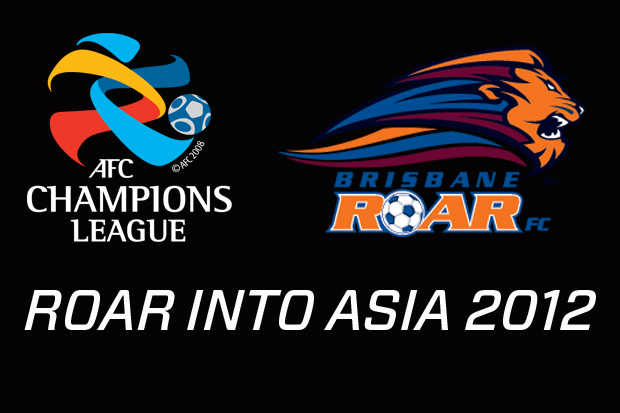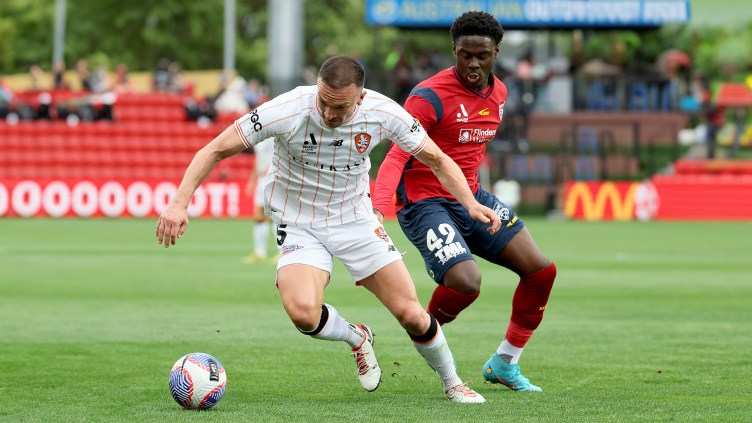Just four days remain until Brisbane Roar’s first opponent in next year’s AFC Asian Champions League campaign is revealed with the final of Japan’s Emperor’s Cup set to be played on New Year’s Day.
Just four days remain until Brisbane Roar-s first opponent in next year-s AFC Asian Champions League campaign is revealed with the final of Japan-s Emperor-s Cup set to be played on New Year-s Day.
The Roar were drawn in Group F in last month-s draw at AFC headquarters alongside Ulsan Hyundai (Korea), Beijing Guoan (China) and the winner of the Japanese knock-out cup.
Brisbane-s first match in the competition will take place against the Japanese team on Tuesday 6 March 2012 at Suncorp Stadium with just four teams remaining in the race to win Japan-s longest-running football tournament and earning themselves right to play in the 2012 edition of the AFC Champions League.
Cerezo Osaka and J-League Division 2 winners FC Tokyo do battle in the first of the Emperor-s Cup semi-finals tomorrow afternoon at 2pm AEST with the team from the capital buoyed with confidence following a 1-0 quarter-final victory over the heavily-favoured Urawa Red Diamonds.
Cerezo booked their semi-final appearance courtesy of a penalty shootout win over Qantas Socceroos- Alex Brosque-s club Shimizu S-Pulse, following a locked 2-2 score line in extra time.
The second Emperor-s Cup semi-final presents another battle between Division 1 and 2 of the J-League with J-League ever-presents Yokohama F. Marinos and Division 2 side Kyoto Sanga FC facing off at 4pm AEST tomorrow.
Yokohama also qualified for the final eight after a shootout, dismissing J-League heavyweights Nagoya Grampus – the team of Qantas Socceroos striker Josh Kennedy – from the competition with a 4-3 victory on penalties while Kyoto knocked out Shonan Bellmare with a solid 1-0 win.
The final will be played between the winners of each semi-final at 3pm AEST on New Year-s Day at the National Olympic Stadium in Shinjuku, Tokyo.
Yokohama F. Marinos
League position: Finished 5th in 2011 season of J-League
Best achievements: Three-time winners of J-League (1995, 2003, 2004), won Emperor-s Cup in 1992
Location: Yokohama is the second-largest city in Japan, after Tokyo, and is located approximately 70km from the Japanese capital.
Stadium: The club play at Nissan Stadium (also known as International Stadium Yokohama), which seats 73,000. The stadium hosted three group stage games at the 2002 FIFA World Cup.
Did you know? Yokohama F. Marinos are the longest serving team in Japanese top flight football, having played in the first division since 1982.
Kyoto Sanaga FC
League position: Finished 7th in 2011 season of J-League Division 2
Best achievements: Two-time winners of J-League Division 2 (2001, 2005), won Emperor-s Cup in 2002
Location: Kyoto is less than three hours travel by bullet train from Tokyo.
Stadium: Kyota Sanga FC play at the multi-purpose Nishiyogoku Athletic Stadium and holds 20,000 spectators.
Did you know? Former Qantas Socceroo Ned Zelic played one match for Kyoto back in 2002 while current Manchester United winger Park Ji-Sung started his career with the club, making 76 appearances between 2000 and 2002.
Cerezo Osaka
League position: Finished 12th in 2011 season of J-League
Best achievements: Have made the Emperor-s Cup final twice before (2001, 2003)
Location: Osaka is located approximately 500km west of Tokyo, with less than 3 hours travel by bullet train between the two cities.
Stadium: The club host their home matches at Kincho Stadium, also known as Nagai Ball Gall Field, which is part of the Nagai Complex. The stadium seats 20,000.
Did you know? The name cerezo means cherry tree in Spanish, which is the flower of Osaka city and which is why Cerezo-s main kit colour is pink.
FC Tokyo
League position: Finished first in 2011 season of J-League Division 2
Best achievements: By finishing first in Division 2, FC Tokyo won promotion to the J-League for the 2012 season. The club has reached the semi-finals of the Emperor-s Cup three times prior to this year (1997, 2008, 2010).
Location: The club is conveniently located in the Japanese capital of Tokyo.
Stadium: FC Tokyo-s play at Tokyo-s Ajinomoto Stadium, located in the western part of the city and holds 50,000 spectators.
Did you know? FC Tokyo-s nickname is “The Gas Men”, as prior to 1999, the team were known as Tokyo Gas FC.




